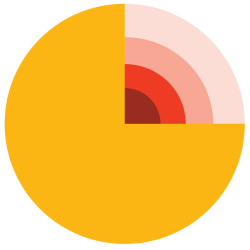Supplementary Material: Numerical Simulations of Seismoacoustic Nuisance Patterns from an Induced M 1.8 Earthquake in the Helsinki, Southern Finland, Metropolitan Area
Krenz, L., Wolf, S., Hillers, G., Gabriel, A.-A., & Bader, M.
Bulletin of the Seismological Society of America
10.5281/zenodo.8056327
Seismic waves can couple with the atmosphere and generate sound waves. The influence of faulting mechanisms on earthquake sound patterns provides opportunities for earthquake source characterization. Sound radiated from earthquakes can be perceived as disturbing, even at low ground-shaking levels, which can negatively impact the social acceptance of geoengineering applications. Motivated by consistent reports of felt and heard disturbances associated with the weeks-long stimulation of a 6-km-deep geothermal system in 2018 below the Otaniemi district of Espoo, Helsinki, we conduct fully coupled 3D numerical simulations of wave propagation in the solid Earth and the atmosphere. We assess the sensitivity of the ground shaking and audible noise distributions to the source geometry of the induced earthquakes based on the properties of the largest local magnitude ML 1.8 event. Utilizing recent computational advances and the open-source software SeisSol, we model seismoacoustic frequencies up to 25 Hz, thereby reaching the lower limit of the audible sound frequency range. We present synthetic distributions of shaking and audible sounds at the 50–100 m scale across a 12 km × 12 km area and discuss implications for better under- standing seismic nuisances in metropolitan regions. In five 3D coupled elastic–acoustic scenario simulations that include data on topography and subsurface structure, we analyze the ground velocity and pressure levels of earthquake-generated seismic and acoustic waves. We show that S waves generate the strongest sound disturbance with sound pressure levels ≤ 0.04 Pa. We use statistical analysis to compare our noise distributions with commonly used empirical relationships. We find that our 3D synthetic amplitudes are generally smaller than the empirical predictions and that the interaction of the source mechanism-specific radiation pattern and topography can lead to significant nonlinear effects. Our study highlights the complexity and information content of spatially variable audible effects associated with small induced earthquakes on local scales.
